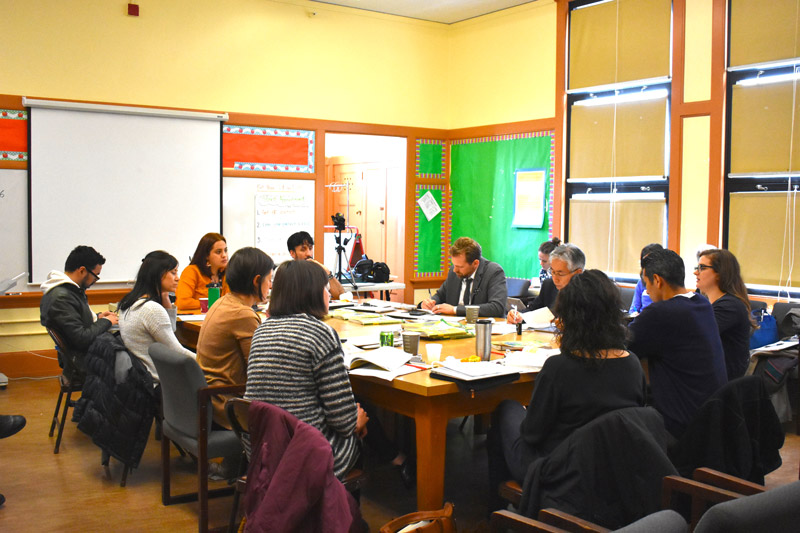Build a Research Theme, Theory of Action, and Indicators
Your school’s research theme and theory of action are the starting points for School-wide Lesson Study. If you have not already built a research theme and theory of action, be sure to visit Study, Step 2 of “Conduct a Cycle” and develop those as a school.
Your research theme (goal) captures an element of your shared long-term vision for student learning you want to address, and your theory of action identifies strategies you want to try. Indicators of progress will help you gauge the impact of your work.
Educators within your school and outside specialists can both provide important ideas for your theory of action. Your theory of action should be based on the best available knowledge, and you should expect it to grow and change as your knowledge builds.
As you think about your school’s research theme, theory of action, and indicators, you may find it useful to read the tile “Research Theme vs. Theory of Action” and to revisit the examples from Matsuzawa Elementary School and Highlands Elementary School. While they did not always use the terms “Research Theme,” “Theory of Action,” and “Indicator,” their work captures well the concept of working on an element of your school vision, drawing on high-quality research for your theory of action, and agreeing on indicators that will help you gauge progress.
Examples of Indicators from U.S. Schools
Indicators help us know whether we are moving toward our goals–whether or theory of action is being brought to life and how students are responding. Prieto School’s theory of action includes:
Indicators Prieto teachers looked for during research lessons include:
Arriving at Useful Indicators
What student actions will indicate success? In the preceding examples from Matsuzawa School and San Francisco USD, notice the specific indicators of progress, such as students “explain their thinking using diagrams and equations,” or “help their partners by teaching not telling.” Find similarly specific indicators that are linked to your vision of student learning and theory of action. Try to avoid vague indicators (“students are engaged”) that reveal little about students’ thinking or development.
Your indicators may differ over grade levels. For example, Matsuzawa teachers expected Grade 1 students to explain their own ideas to the class, but expected older students to explain their own and classmates’ ideas. And by Grade 6, they expected students to explain their own ideas, classmates’ ideas, and how their own ideas had been changed by classmates’ ideas!
Crafting a Useful Research Question, Theory of Action, and Indicators
If you have done research or inquiry with your students, you know that it’s hard to arrive at a just-right research question and theory of action. Don’t be afraid to revise your research question and (especially) your theory of action and indicators as you learn more about your students and your topic. The following reflection questions may help your school shape a useful research question and theory of action.
- Does this research question really interest us? Will the answer be useful to our school?
- Does our Theory of Action build on what is currently known? For example, do colleagues, research or programs suggest the promise of the strategies we propose to try? Conversely, does research suggest our strategies are problematic? (For example, are we relying on extrinsic incentives rather than figuring out how to elicit students’ intrinsic motivation?)
- Does our Theory of Action capture some strategies or approaches that teachers at our school would really like to try out?
- Do we care about the indicators? Do they seem important, easy to collect, and observable?

